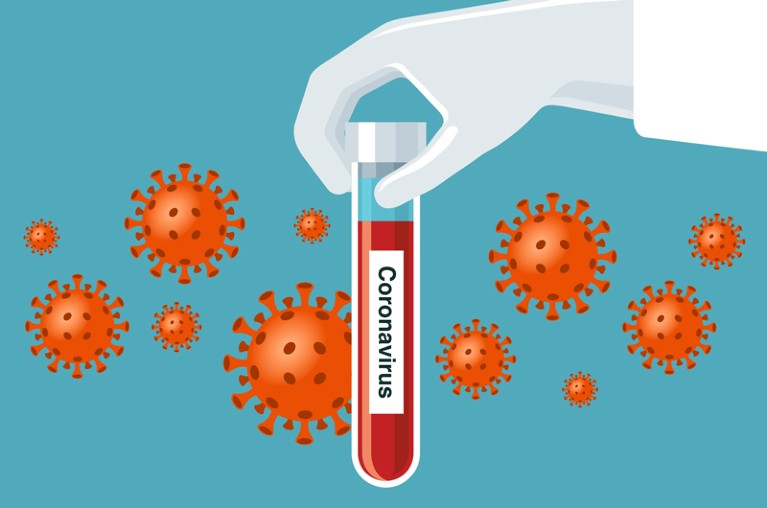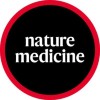Clinical testing
RT-PCR tests for viral detection were the first available clinical tests, though scaling up their production and availability has been a persistent challenge in many countries. Important testing advances have included the development of saliva-based protocols and loop-mediated isothermal amplification protocols for SARS-CoV-2 detection. Serological testing for SARS-CoV-2 received an early boost by the development and sharing of reagents by the Krammer lab at Mount Sinai, New York.
Drug repurposing
The rapid spread of COVID-19, which by March had led to nationwide lockdowns in Italy and Spain, spurred attempts at drug repurposing. On 22 March, the WHO launched SOLIDARITY, a global trial of four therapies: the RNA polymerase inhibitor remdesivir, chloroquine and hydroxychloroquine (this arm has now been stopped), the HIV protease inhibitor combination lopinavir and ritonavir (results so far are not encouraging), and lopinavir-ritonavir plus interferon beta (which has shown reduced viral shedding and alleviated symptoms in one open-label trial). At time of writing, two drugs have been shown to be effective in clinical trials, remdesivir and the corticosteroid dexamethasone. In randomized control trials, remdesivir shortened the length of hospitalisation, but did not have a significant impact on mortality; dexamethasone significantly reduced mortality in patients requiring supplemental oxygen.
Candidate vaccines
By April, human trials were underway for several vaccine candidates, including established approaches like inactivated SARS-CoV-2 preparations as well as more recent strategies such as RNA- and adenoviral-derived products. Early results on safety and immunogenicity are already available for some of these, with Moderna announcing that its RNA SARS-CoV-2 vaccine induced a specific antibody response in phase I trials, and CanSino also showing specific antibody induction by its adenovirus-based vaccine. Passive immunization is also being pursued by various means, including convalescent plasma, hyperimmune serum preparations and the development of SARS-CoV-2-specific monoclonal antibodies.

Six months of COVID-19 researchCredit: Nature Medicine
Pathogenesis
While the infectious agent was rapidly identified, understanding COVID-19 pathogenesis has proven much more difficult. Though respiratory failure remains the most frequent serious clinical feature of COVID-19, reports have linked SARS-COV-2 infection to coagulopathy and vascular disease, neurological defects (predominantly loss of taste and smell), kidney disease, stroke in young people, Kawasaki-like syndrome in children, and an array of other conditions. The risk of severe COVID-19 is clearly not evenly-distributed, with age the single most important risk factor, and a clear increased susceptibility in males. A genome-wide association study has also shown a link between ABO blood groups and severe COVID-19, with blood type A conferring increased susceptibility and blood type O conferring moderate protection. Hypertension and diabetes remain the most important comorbidities. Several studies have found that commonly used angiotensin-converting enzyme (ACE) inhibitors and angiotensin II receptor blockers have no negative effect on the outcomes of patients with COVID-19.
Our knowledge of tissue-tropism of SARS-CoV-2 is also rapidly expanding, and it is clear that cell types outside the respiratory system can be infected, particularly in the gut epithelium. The role of SARS-CoV-2 infection in different tissues during COVID-19 pathogenesis is a key open question. Efforts to understand innate immune components of resistance to SARS-CoV-2 are also ongoing, including genetic surveys of the role of primary immunodeficiencies.
Immunity
Fundamental questions about immunity to SARS-CoV-2 remain. Perhaps chief among these are the immune correlates of protection, and the duration of immunity. The most consistent link to high serum anti-SARS-CoV-2 antibody levels has been with severity of disease, and a recent study has found a significant drop in specific antibody levels after three months. T cell immunity to SARS-CoV-2 is also only beginning to be understood, and there is some indication that cross-reactive T cell immunity to other coronaviruses may be relatively frequent.
Transmission
The susceptibility of children to SARS-CoV-2 infection and their role in transmission remain the subject of debate, particularly in the context of discussion on efficacy of school-closure measures. A widely-publicized study from Harvard’s Chan School of Public Health predicted that “prolonged or intermittent social distancing may be necessary into 2022”, and modeling suggests that seasonal climate variation effects on SARS-CoV-2 transmission will not be sufficient to halt the COVID-19 pandemic. Several studies are now attempting to unravel the efficacy of lockdown, social isolation, mask-usage, contact-tracing, and other non-pharmacological interventions in containing COVID-19. The looming question in COVID-19 epidemiology is without doubt the existence, timing, and severity of a putative second wave. If and when this wave arrives, we will be facing it armed with an impressive amount of basic scientific knowledge, a set of tools and practices ranging from prone-positioning of patients to cutting edge pharmacological approaches, and the hope of responsible public health policies.


 News: COVID-19 Research in Brief: 13 June to 19 June, 2020
News: COVID-19 Research in Brief: 13 June to 19 June, 2020
 More News and content from Nature Medicine
More News and content from Nature Medicine